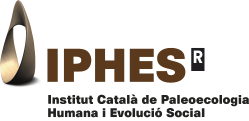Staff
Pérez Luís, Leopoldo Jesús
Affiliated Researcher
E-mail: ljperez@iphes.cat
PhD Erasmus Mundus in Quaternary and Prehistory (2019) by Universitat Rovira I Virgili and Muséum national d'Histoire Naturelle and currently a postdoctoral researcher funded by the Foundation La Caixa – Cajacanarias at the University of La Laguna (Tenerife, Spain). Leopoldo J. Pérez Luis (ORCID: 0000-0002-5622-368X) has built a career spanning over ten years, during which he has successfully secured competitive national grants (FPU, JdC-Formación, APOSTD), prizes and contracts through successive positive evaluations. These achievements have supported the development of his main research line, which focuses on understanding the subsistence dynamics of Upper Pleistocene prehistoric groups, such as Neanderthals and anatomically modern humans. His approach emphasizes the interaction of these groups with macromammal communities in various regions of the Iberian Peninsula.
Over the years, Leopoldo Pérez has worked and conducted research stays at several european scientific institutions and museum centers, including the University of La Laguna, Universitat Rovira i Virgili, Universitat de València, University of Oviedo, Muséum national d'Histoire Naturelle, the Mediterranean Laboratory of Prehistory Europe Africa at Aix-Marseille University, the Prehistoric Research Service of the Prehistory Museum of Valencia, and the Anatomical Museum of the University of Valladolid.
His research has resulted in approximately thirty scientific publications and a similar number of presentations at national and international scientific conferences. All these contributions focus on the study of various faunal assemblages of both anthropic and natural origin from the Upper Pleistocene, located in the Mediterranean region of the Iberian Peninsula. Notable examples include well-known sites such as El Salt, Abric del Pastor, Cova de l’Hort de Cortés-Volcán del Faro, Les Coves de Santa Maira, Cova Foradada de Xàbia, and, in the Cantabrian region, specifically the Cueva de Llonín.
In parallel, he has explored various research areas through collaborations with teams in Paleontology and other more distant fields, such as technological development and teaching methodologies applicable to his discipline. His involvement in several internationally renowned archaeological complexes, his role as a member of scientific and organizing committees at conferences, his work as a reviewer for indexed journals, as well as his participation in workshops, exhibitions, and museum activities aimed at scientific dissemination, along with extensive teaching experience and the mentorship of young researchers, comprehensively shape his academic profile.


